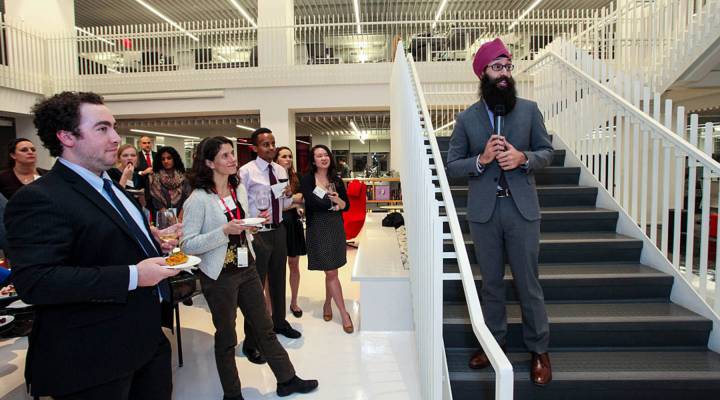
To fix health care, try a walk around the neighborhood

The American health care system can be complex, to say the least, which has left some people just flat out avoiding it. This was the case for a man called “Ray” who was admitted to a Harlem-area hospital and into the care of Dr. Prabhjot Singh. Ten days later, Ray died in the hospital. Singh was early in his residency, and treating Ray forced him to reconsider not only how he cared for his patients, but the American health care system as a whole.
Singh spoke to Marketplace’s Kai Ryssdal about his book “Dying and Living in the Neighborhood: A Street-Level View of America’s Healthcare Promise”
On what is lacking in the health care sector:
At the heart of it, it’s not so much a question of getting physicians to walk around the neighborhood, but I think it’s also about letting people that are already in the community be representatives and also formally part of how we look at our health care system. The only way to really move forward is to learn by doing and make sure that we actually can see the progress that we are making.
On solutions he’s seen:
As a physician, the thing I really felt I had to do was go around the country and learn a little bit from people that are actually making this work. Parkland Hospital is a public safety net hospital in Dallas, and I encountered a group of technologists, designers and physicians who were starting to bring together 400 plus community-based organizations across Dallas, give them free client management software and connect it all up electronically to the health care system. And anytime people that the health care system thought were in trouble were touching any one of the 400 organizations in that network, everybody started to get a better picture of who they were, where they were going, what challenges they encountered. I think the most remarkable thing is not the technology, but I think the fact that there was vision to bring together all these organizations to design the platform that Parkland would be communicating across.
There’s a lot happening in the world. Through it all, Marketplace is here for you.
You rely on Marketplace to break down the world’s events and tell you how it affects you in a fact-based, approachable way. We rely on your financial support to keep making that possible.
Your donation today powers the independent journalism that you rely on. For just $5/month, you can help sustain Marketplace so we can keep reporting on the things that matter to you.












